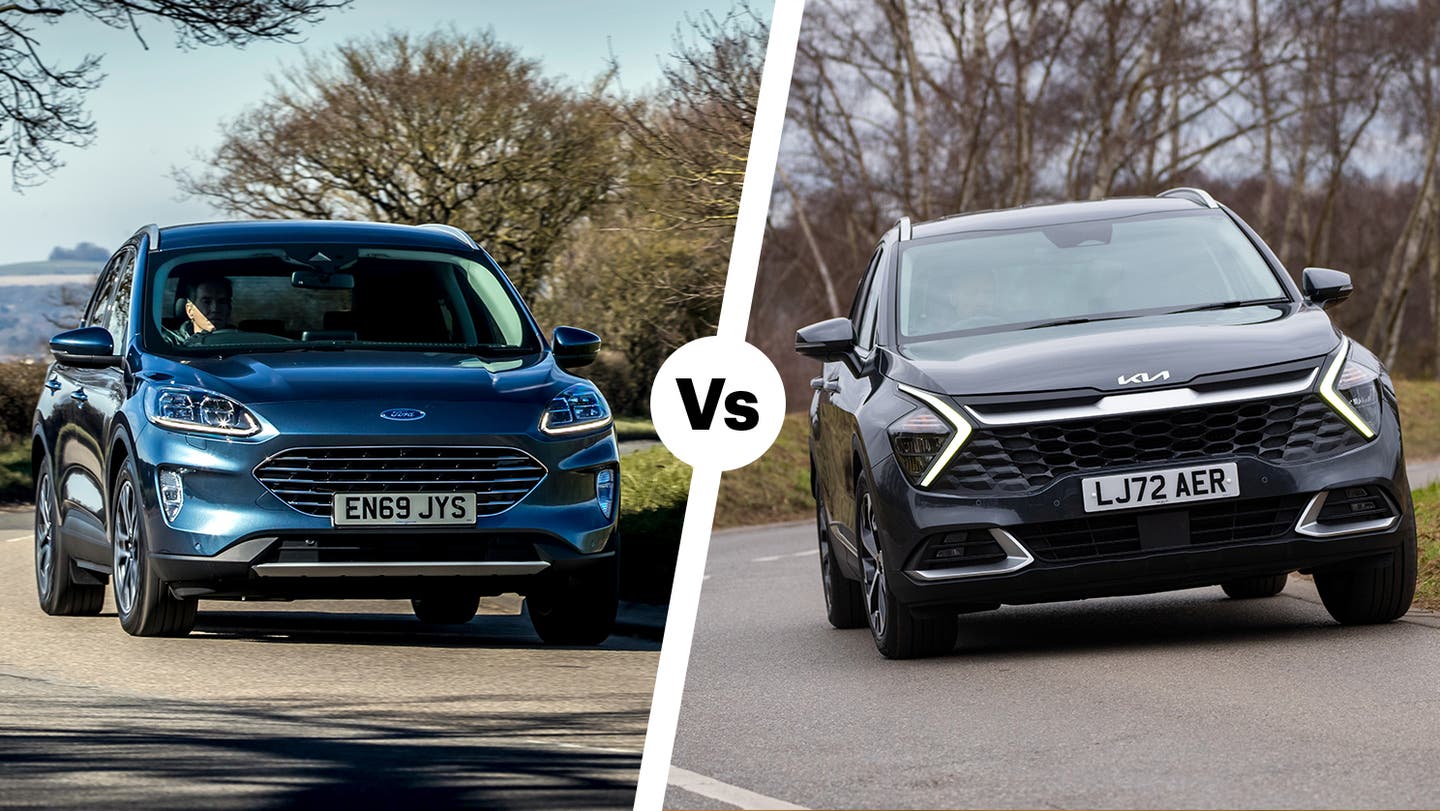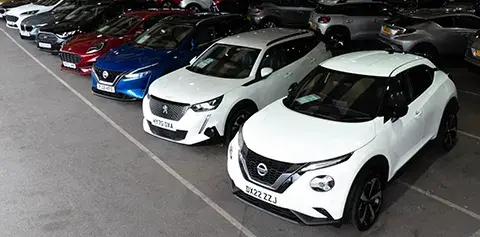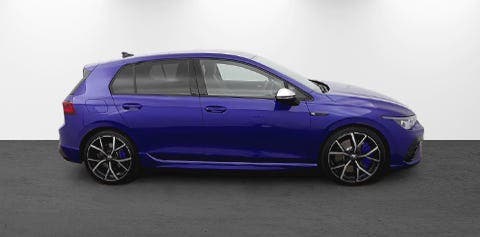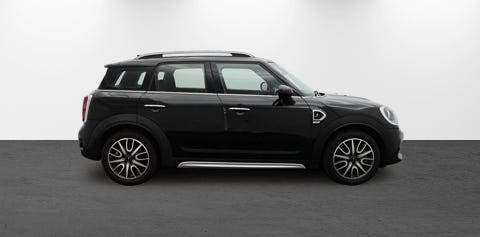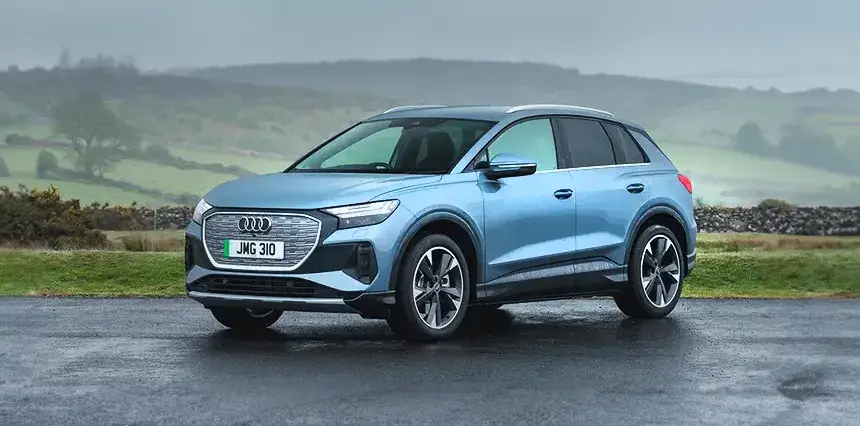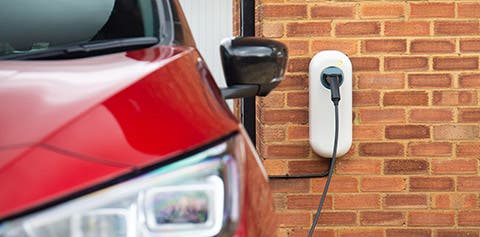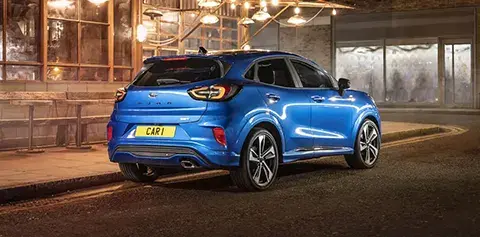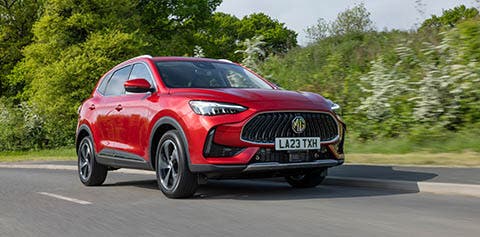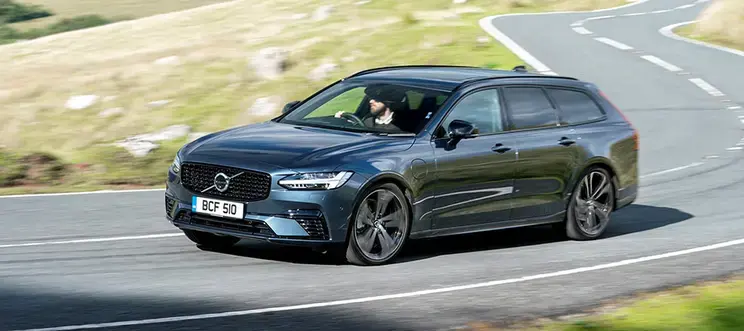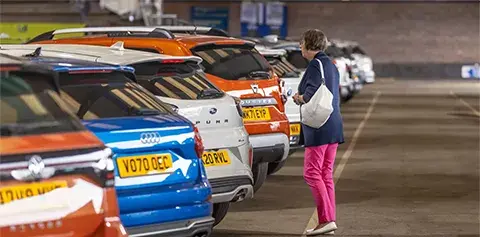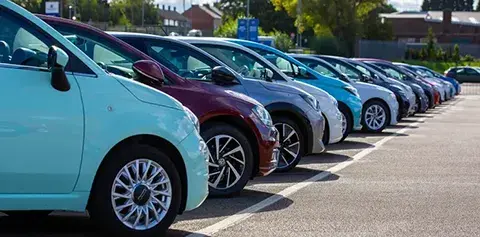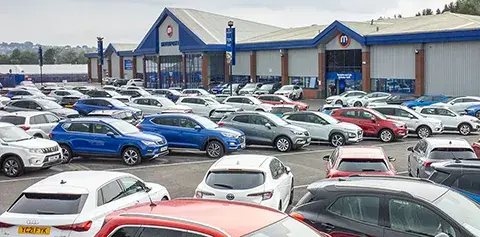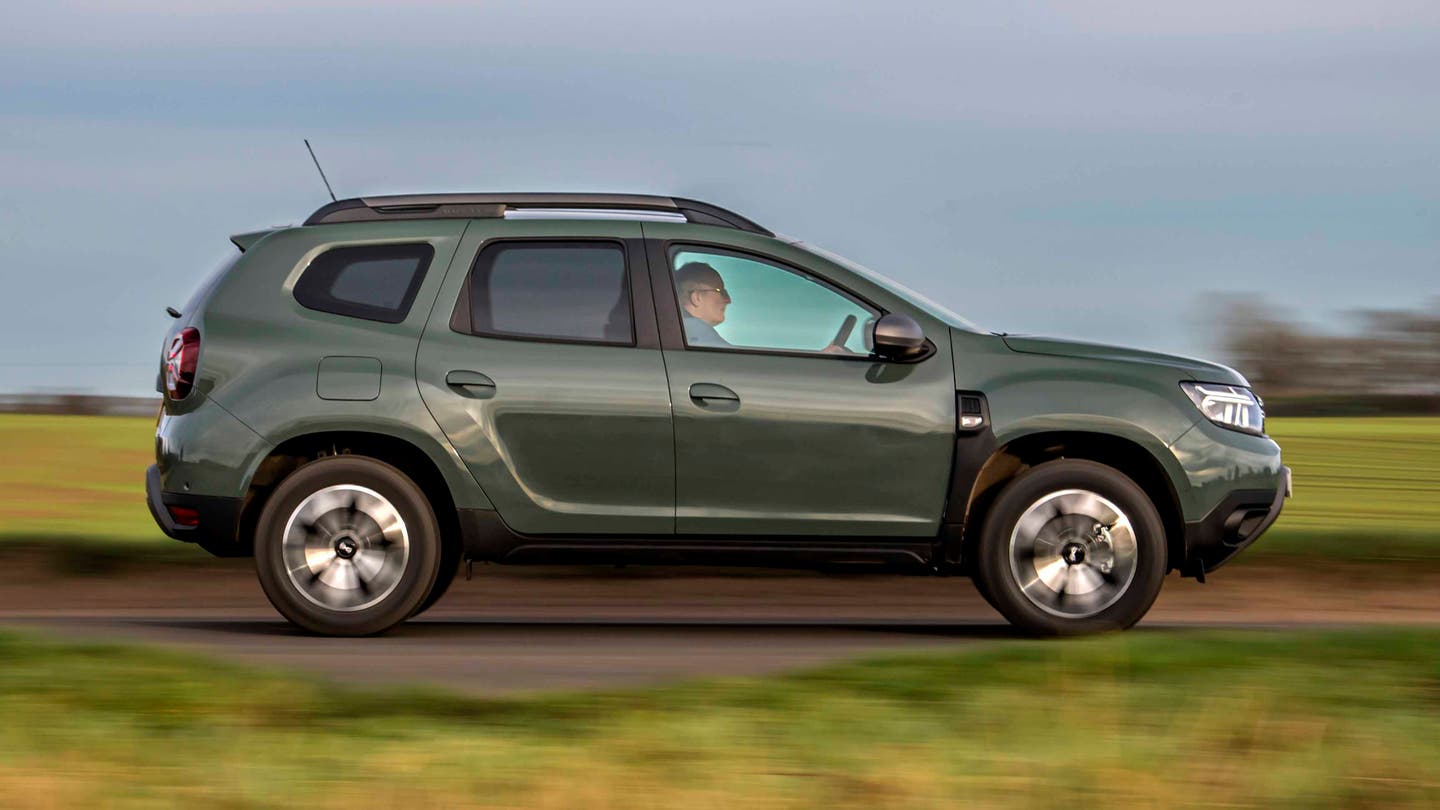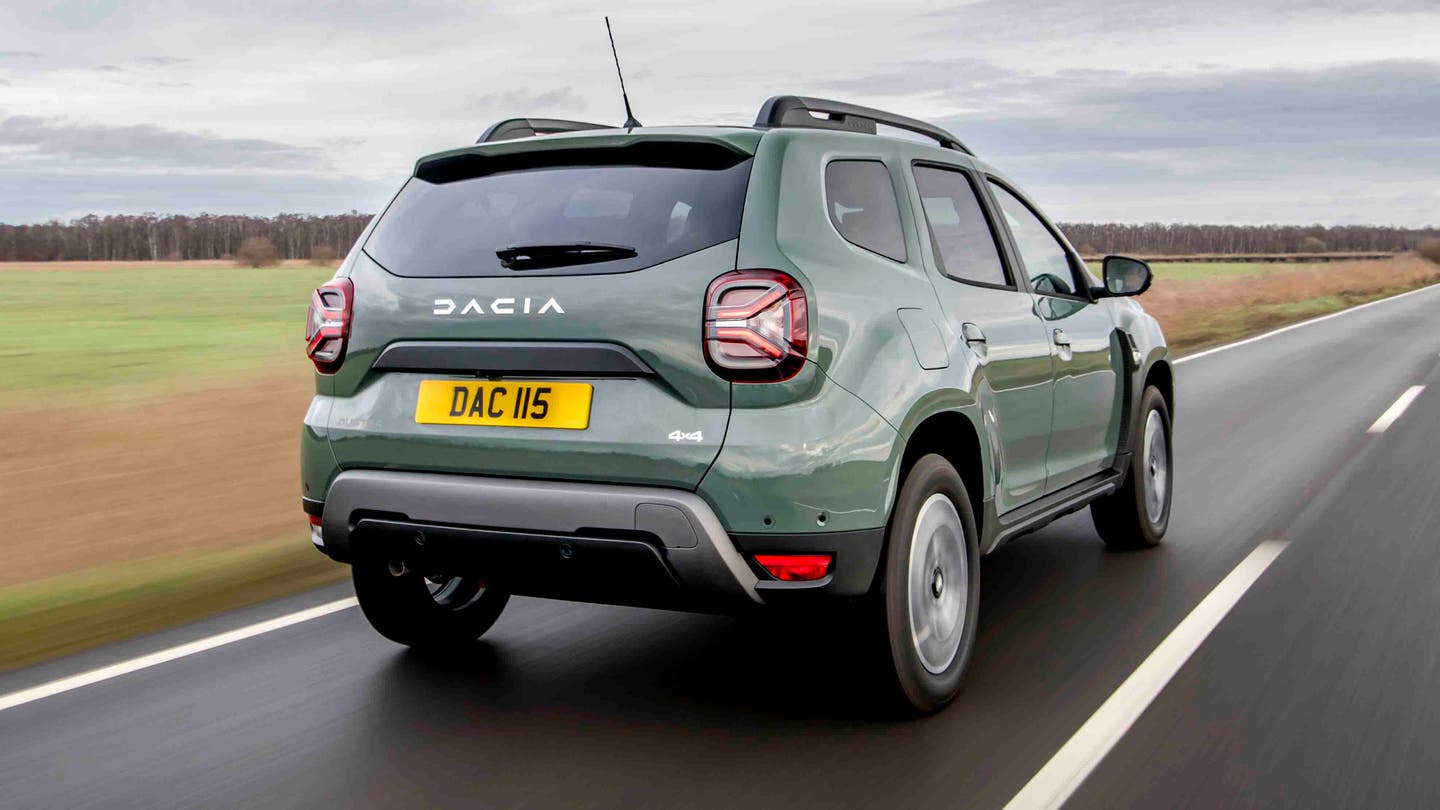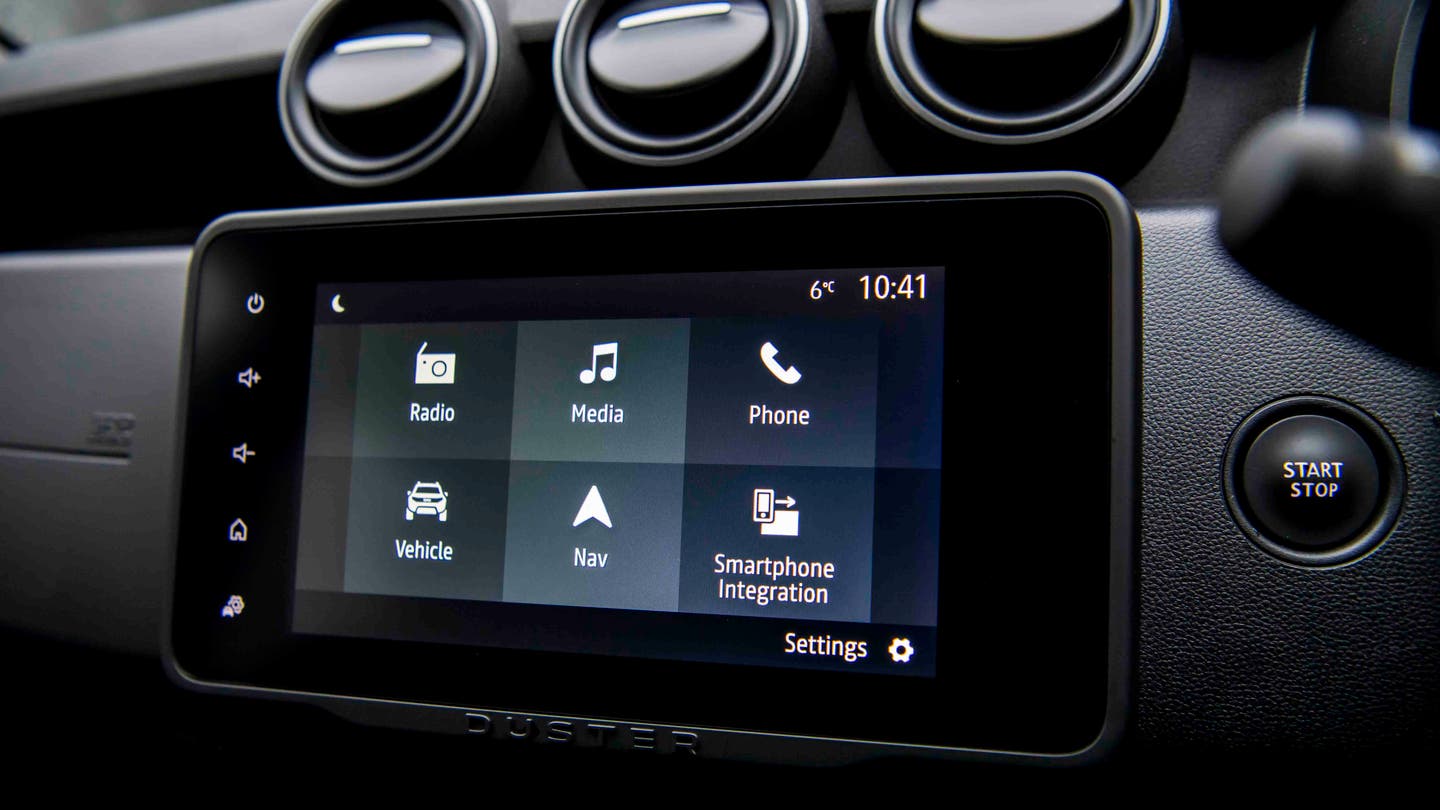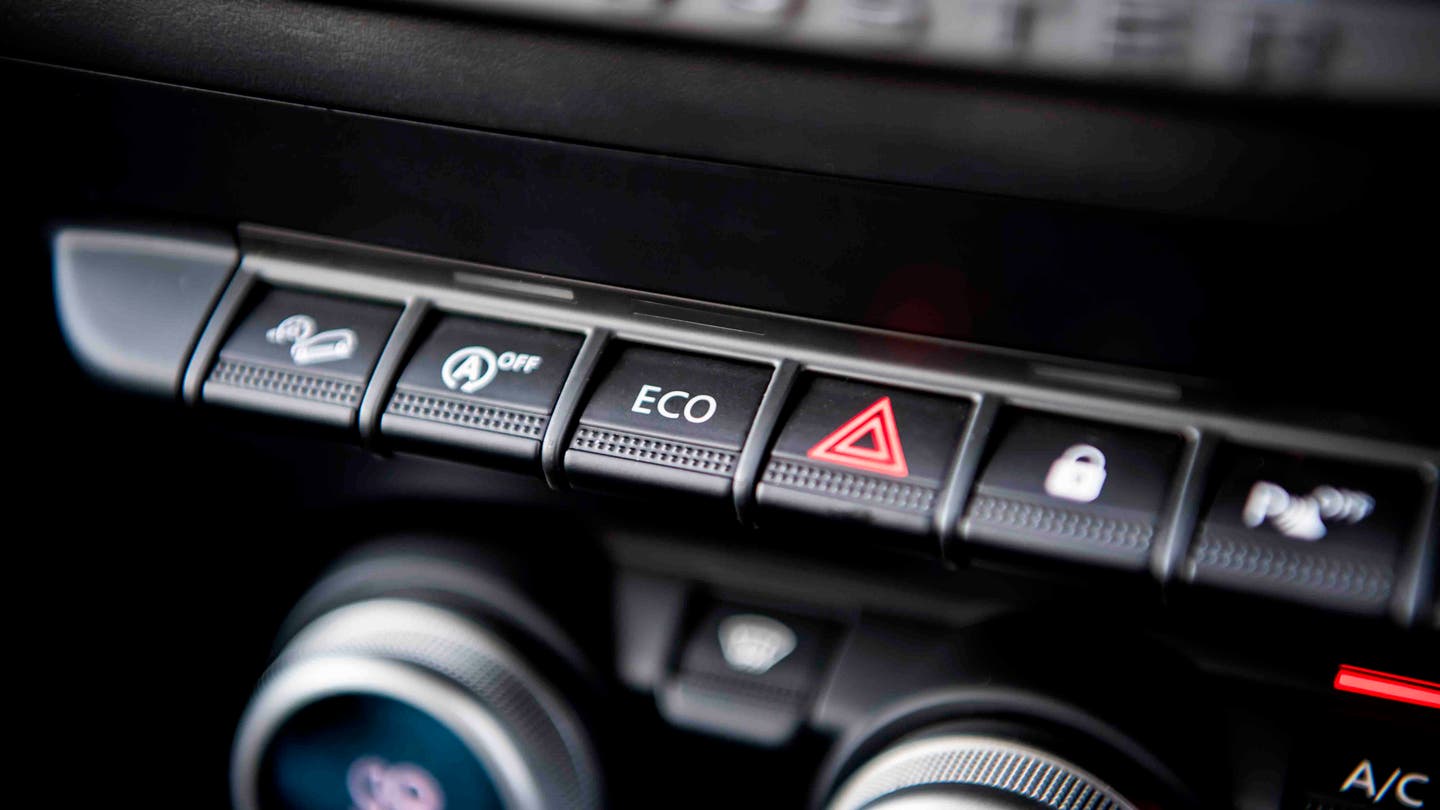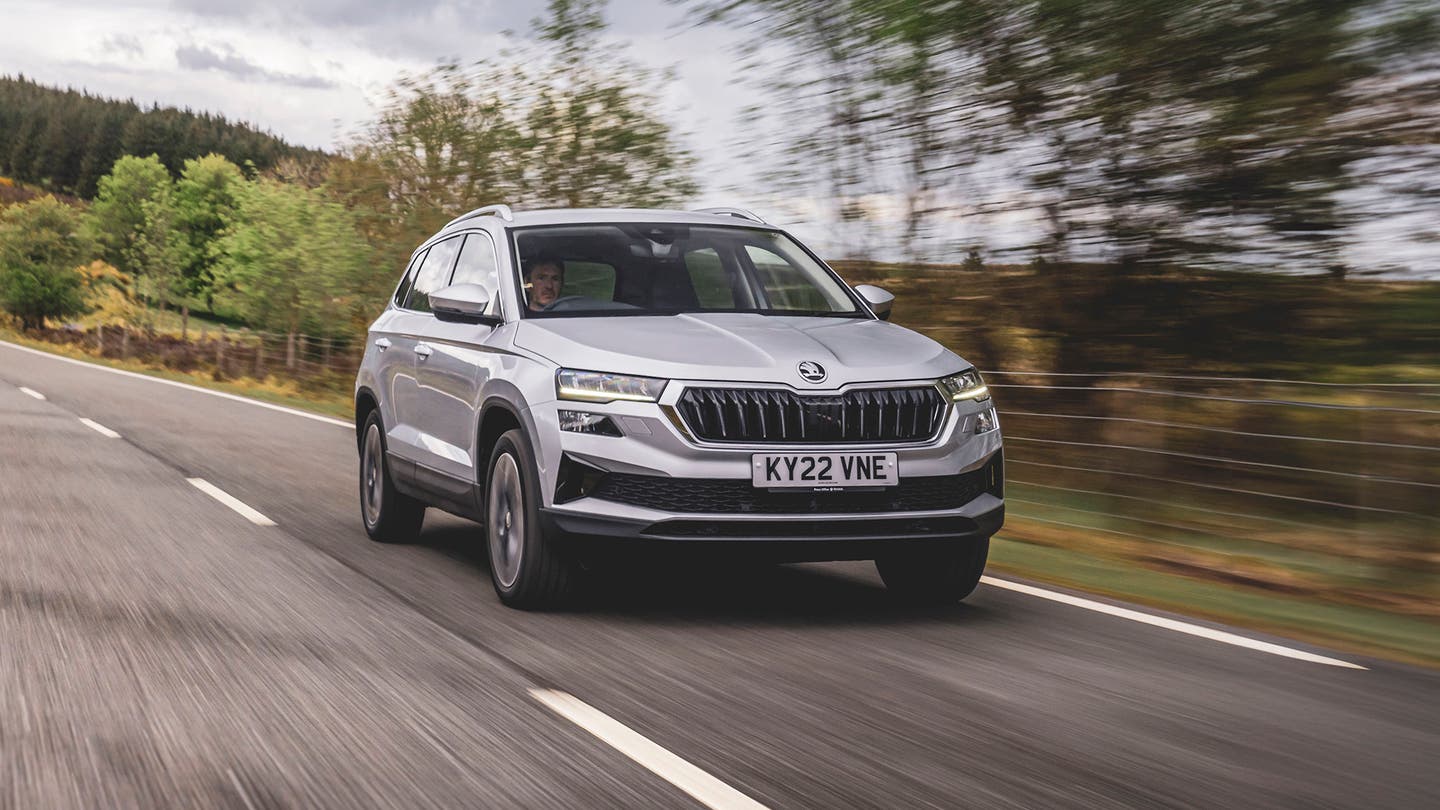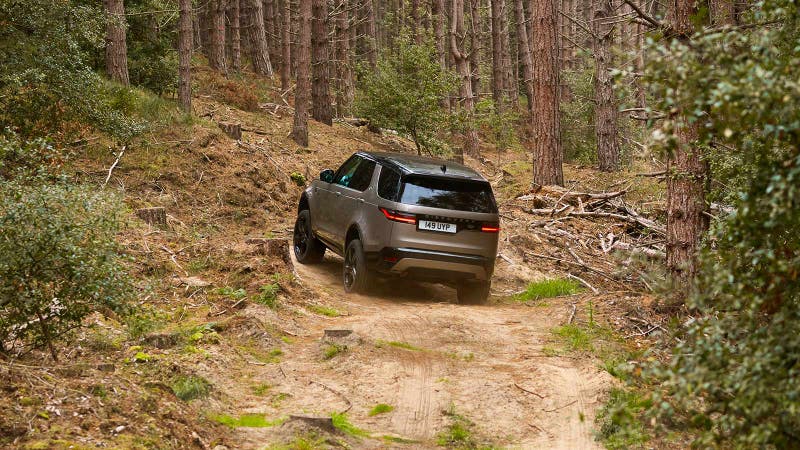
Dacia Duster interior, tech and practicality
Gallery
Comfort and visibility
The Dacia Duster is a masterclass in strong and simple interior design. Compared to some of the over-styled interiors you get in some SUVs, the Duster is refreshing. There’s a trio of round air vents at the top, with a slab below that either includes a basic radio or a colour touchscreen, and then some proper air con buttons and dials.
Sure, the materials are hard and scratchy rather than soft and plush, but they’re easy to wipe down and should last a long time. At least the air con dials feel nice, and some models get a soft steering wheel.
The seats should be comfortable enough for most buyers, but we did find the centre console jabs into the driver’s leg a little – try the Duster before you buy to make sure it’s comfortable for you.
Visibility is good, thanks to the Duster’s big windows. And all Dusters now include rear parking sensors as standard, so parking isn’t very difficult.
Standard equipment
You might occasionally come across the Dacia Duster Access, a truly no-frills model without even a radio. Unsurprisingly, few UK buyers are happy to drive such a sparsely equipped model, which also affects its resalability. Essential trim adds split-folding rear seats, a height-adjustable driver’s seat, roof rails, cruise control, Bluetooth, DAB radio and air conditioning.
Comfort is probably our pick of the range, with its rear parking sensors – also fitted on newer Essential models – alloy wheels, black door trim and silver roof rails and mirror caps. Seemingly small exterior changes add up to make a noticeable difference. The big upgrade inside is a built-in touchscreen, which boasts Apple CarPlay and Android Auto connectivity, plus a reversing camera.
On top of this, Prestige adds front sensors, larger alloys with a two-tone finish, built-in sat nav and blind-spot monitoring. Comfort and Prestige were later replaced by the largely similar Expression and Journey trims.
Look out for a couple of special-edition trim levels, including the Techroad – a 2019 model with exclusive red paint, side graphics and unique upholstery – and the Extreme SE, which adds black wheels and orange accents for a welcome lift in style. The Extreme doesn’t make much sense as a new model, but won’t be much more than the Journey trim level on the used market.
Infotainment and audio
Excluding the United Nations-spec Access, which only comes with the wiring for an aftermarket radio, the Duster comes with either a conventional radio display or a more modern touchscreen. People who mainly listen to the radio and have an innate navigational ability will be fine with the Essential trim, but we’d recommend picking a Duster with a touchscreen if you want a few more features.

The touchscreen isn’t packed with tech, but we’re not complaining. It includes all the major functions you’d expect, and the phone connectivity lets you use your mobile’s navigation apps. The fact that it isn’t bursting with features you’ll never use means it’s really easy to get your head around – there aren’t hundreds of submenus to get lost in. What’s more, the system is responsive to your inputs and has clear graphics. A lot of carmakers could learn lessons from Dacia’s infotainment offering.
There’s not much for keen music fans to get excited about, but casual listeners shouldn’t find much wrong with the standard four-speaker audio system.
Rear seat space
Rear-seat space is generous considering the Duster’s fairly compact proportions. Legroom and headroom are both good, and most adults will be able to get comfortable in the back seats.
All Dusters get Isofix points to attach child seats to, and the tall doors mean it should be easy enough to get young’uns in and out.
There’s not a whole lot else back there, though. The door materials are scratchy and unyielding, seatback pockets are reserved for the higher trim levels, and lower-spec cars make do with wind-down windows in the back.
Boot space
Most Dusters have a 445-litre boot which, just like the car’s size, puts it right between small and midsize SUVs. It’s a flat, long and useful space that’ll swallow a weekly shop and a few family must-haves with ease. And, with minimal intrusion from the brake lights, the boot opening is tall and wide, making the Duster perfect for carrying bulky and awkward items.
Four-wheel-drive Dusters only lose 30 litres of boot space compared with two-wheel-drive ones, while Bi-Fuel cars can’t have a spare wheel because it’s replaced with the LPG tank. On models with a spare wheel, you’ll notice it sits underneath the car rather than below the boot floor.


